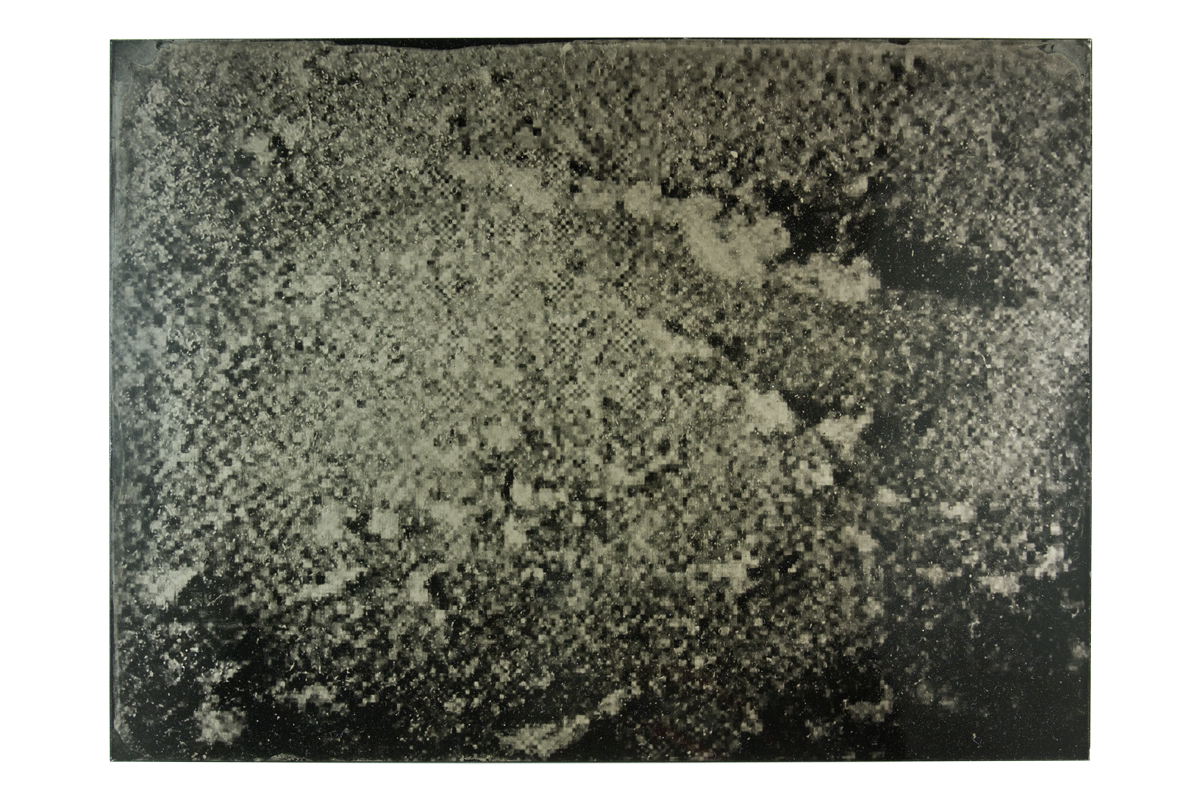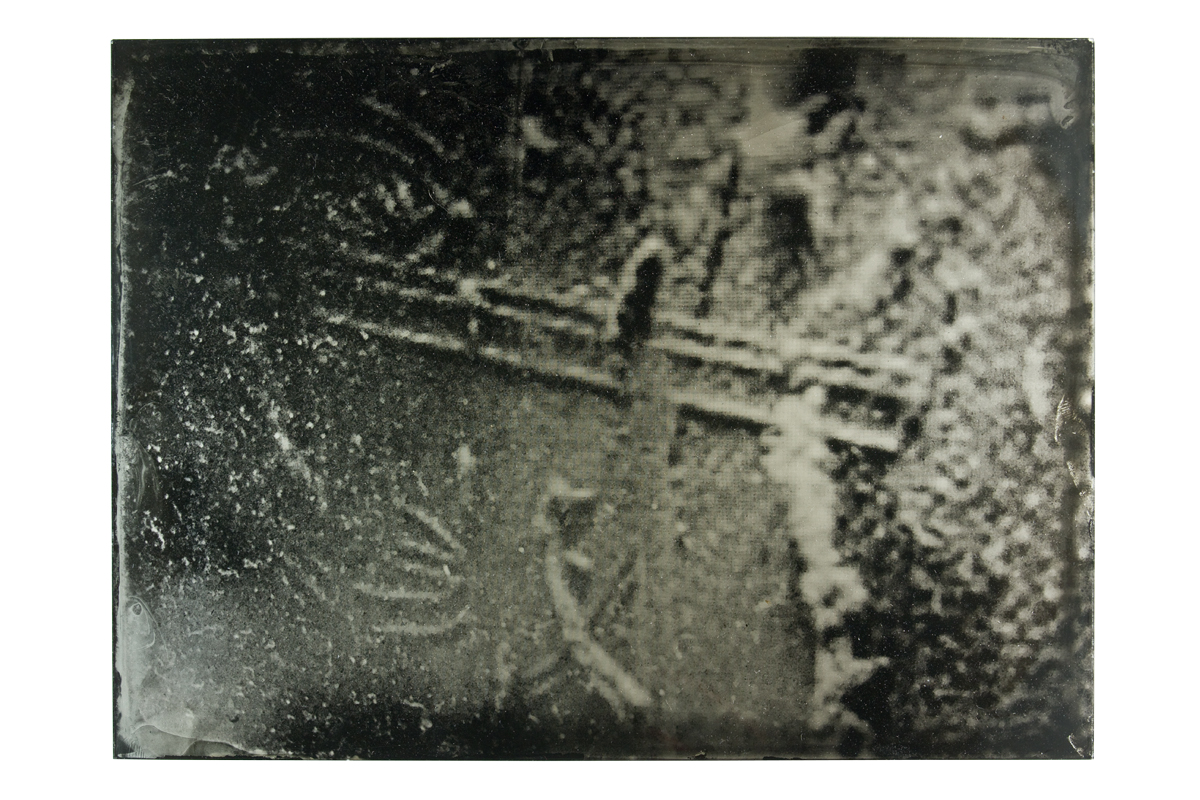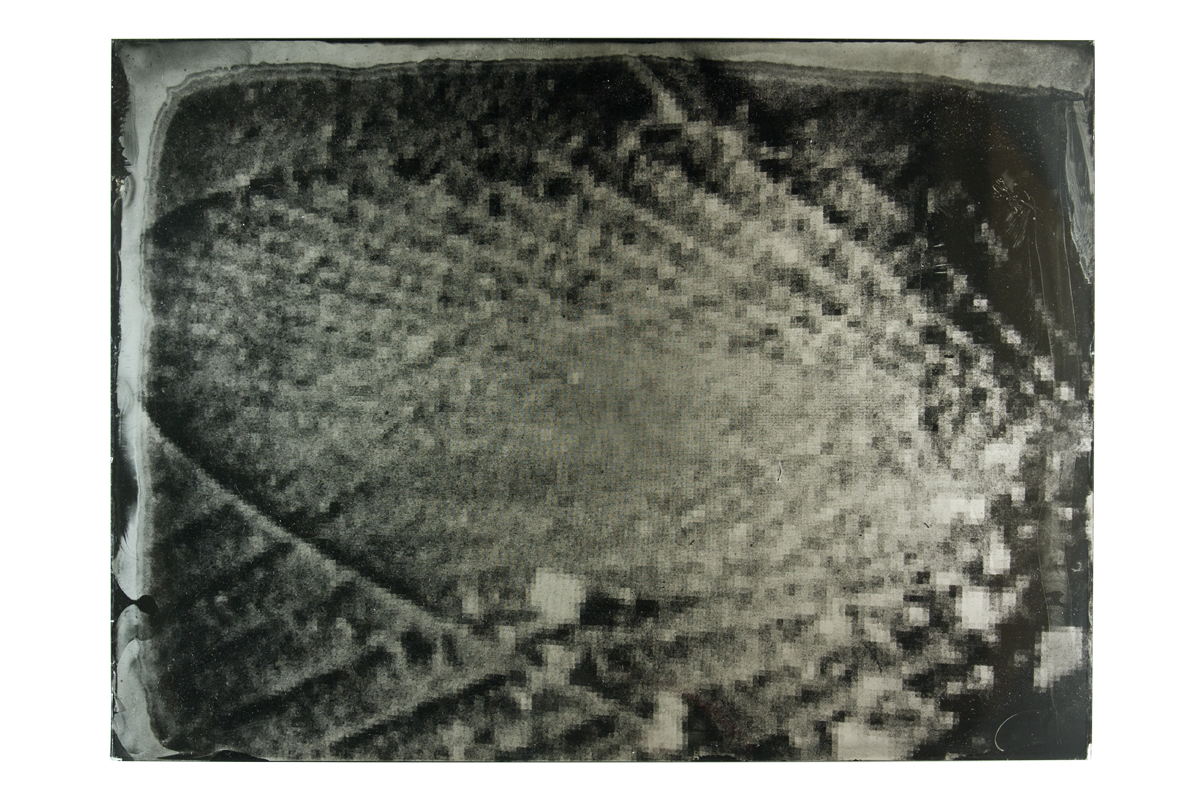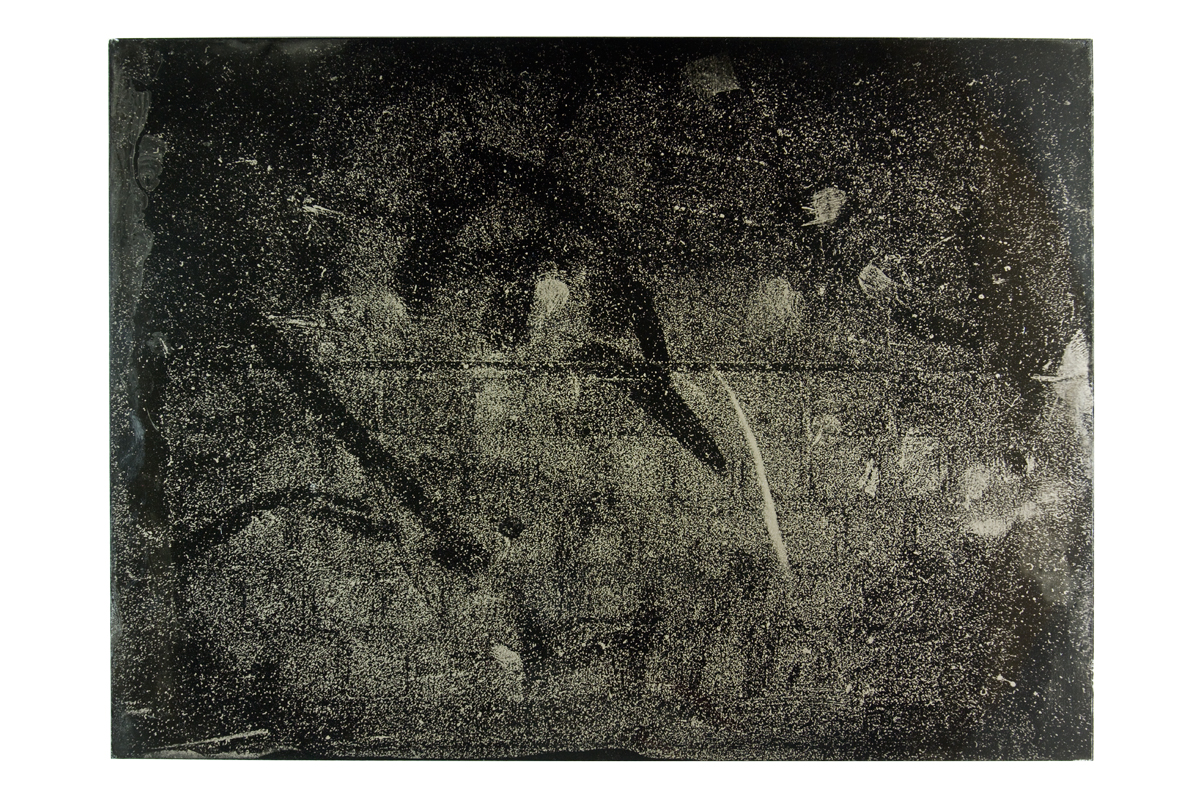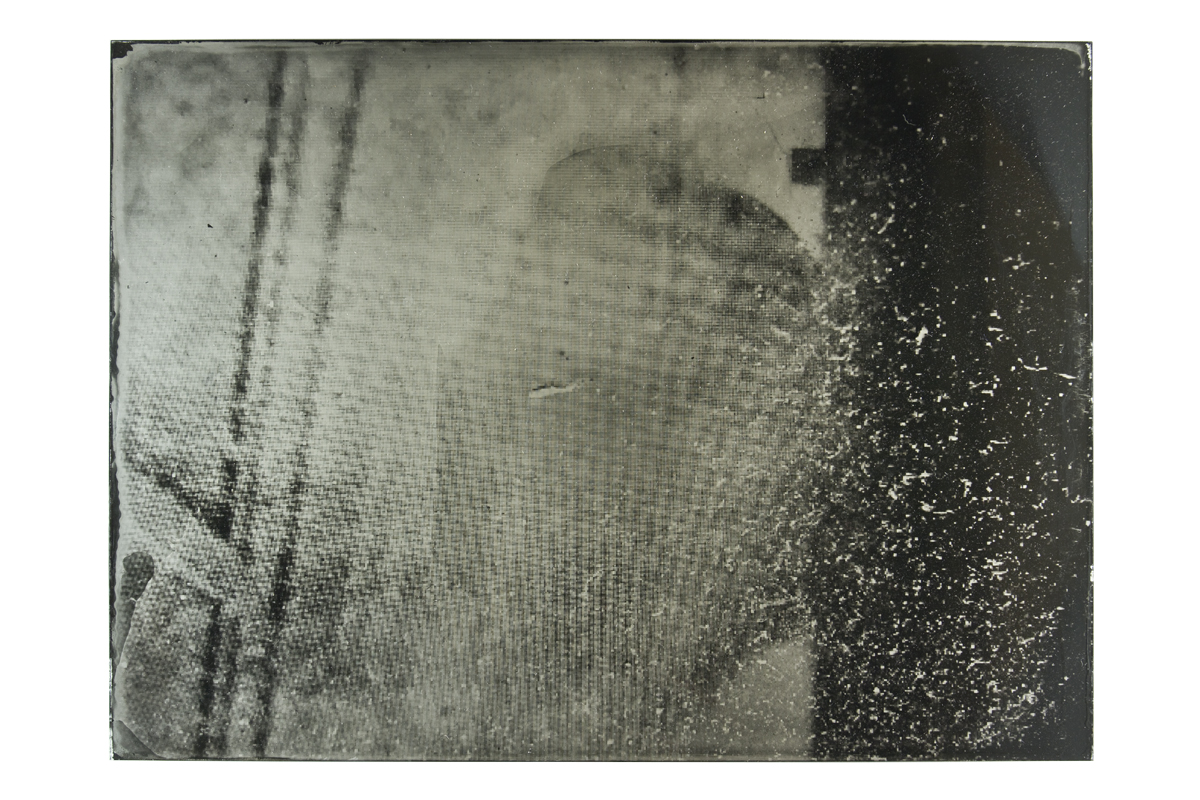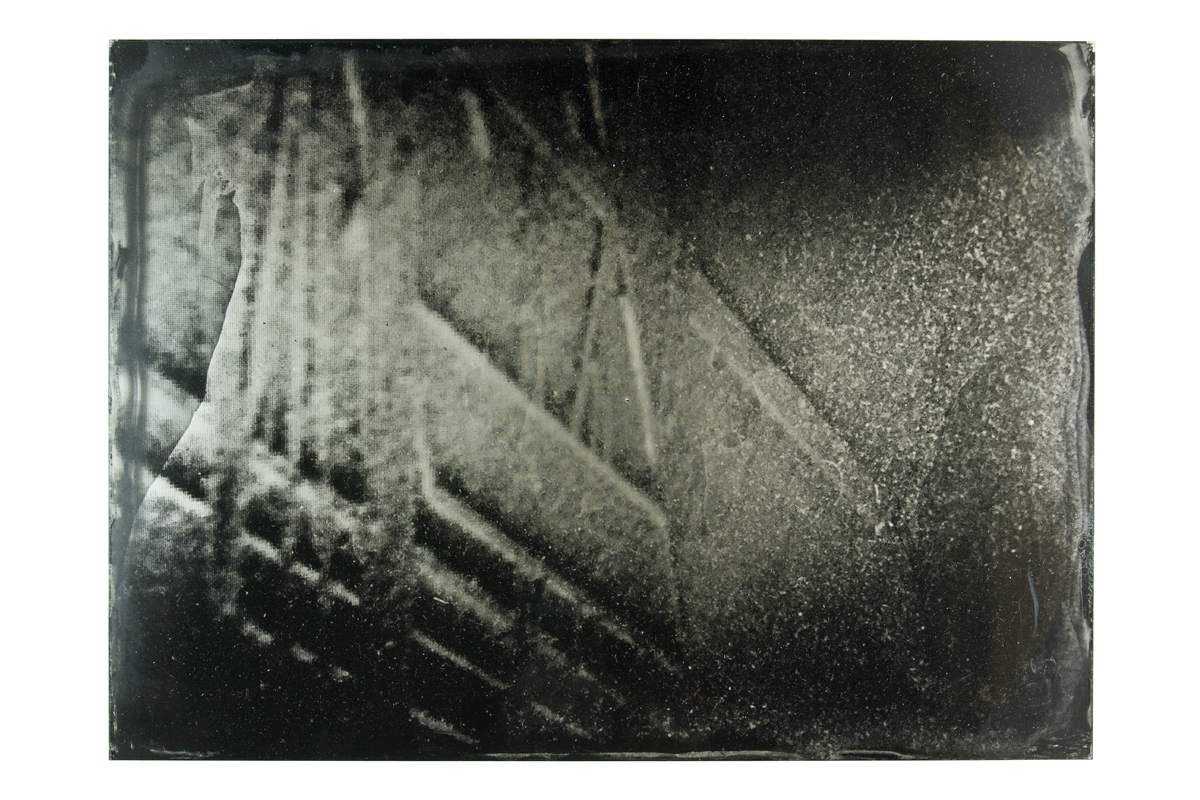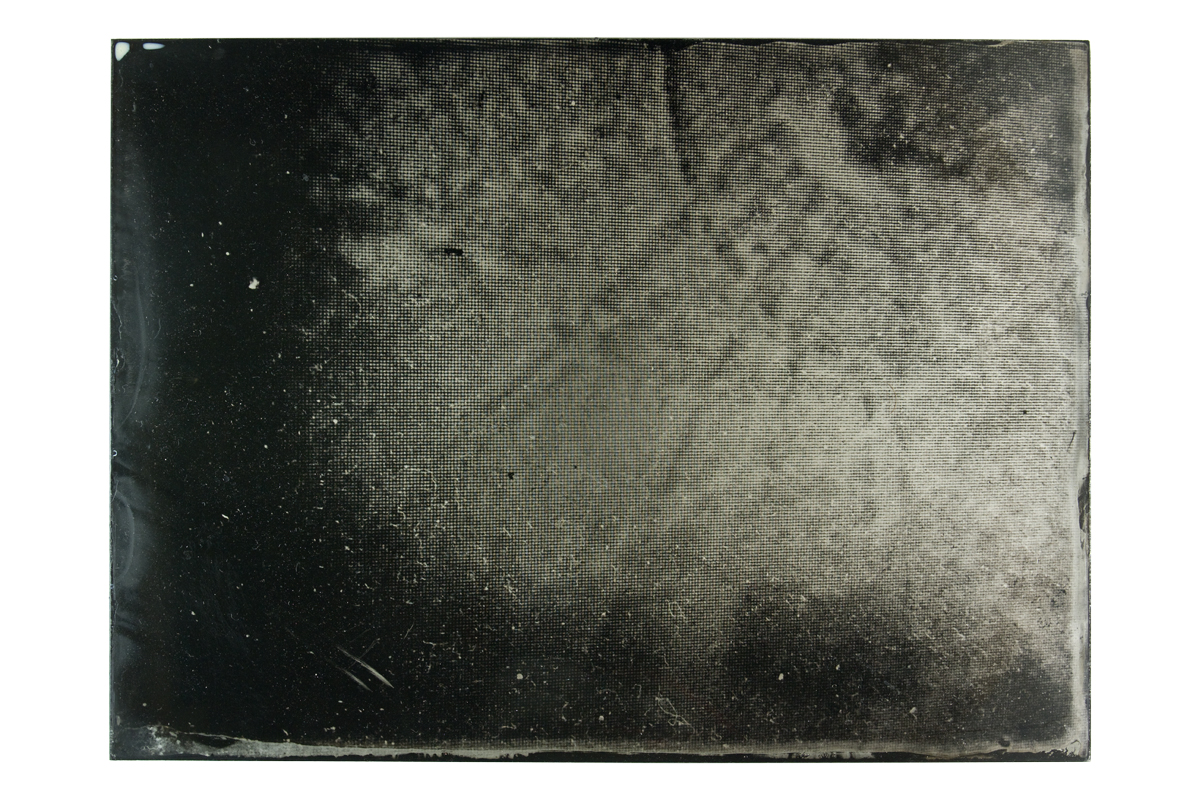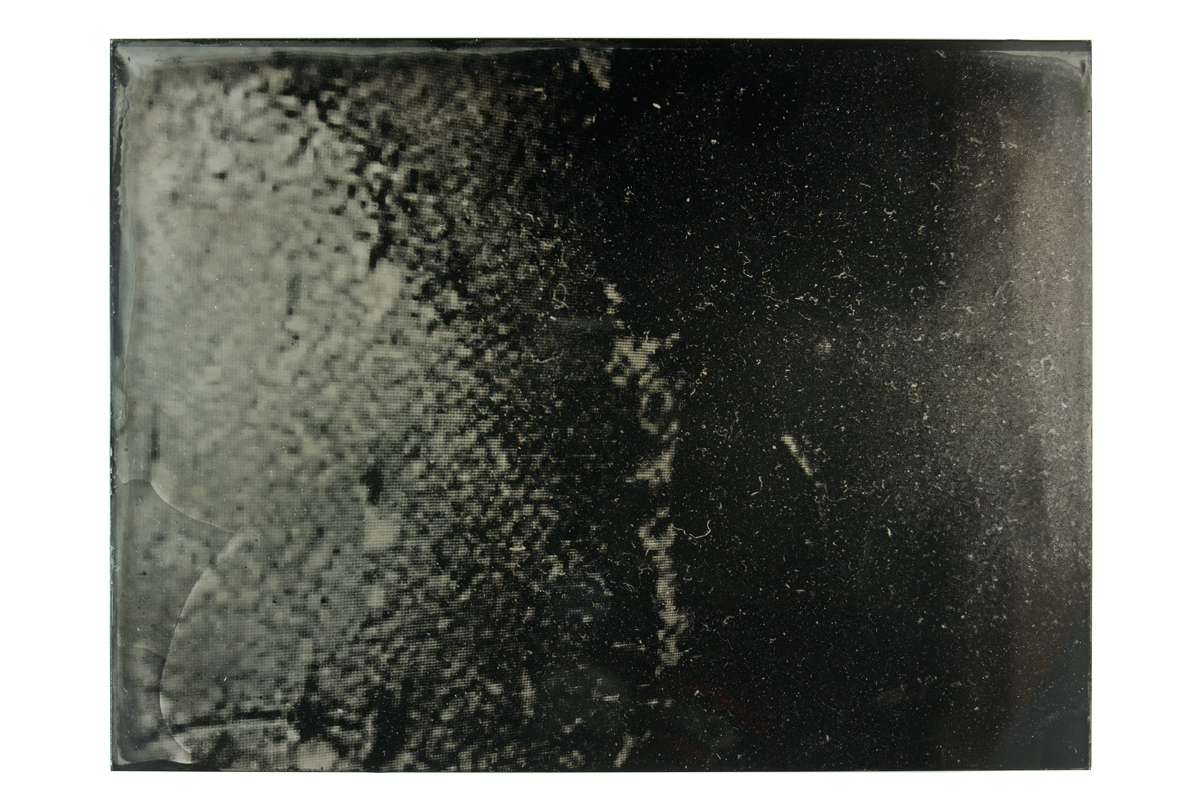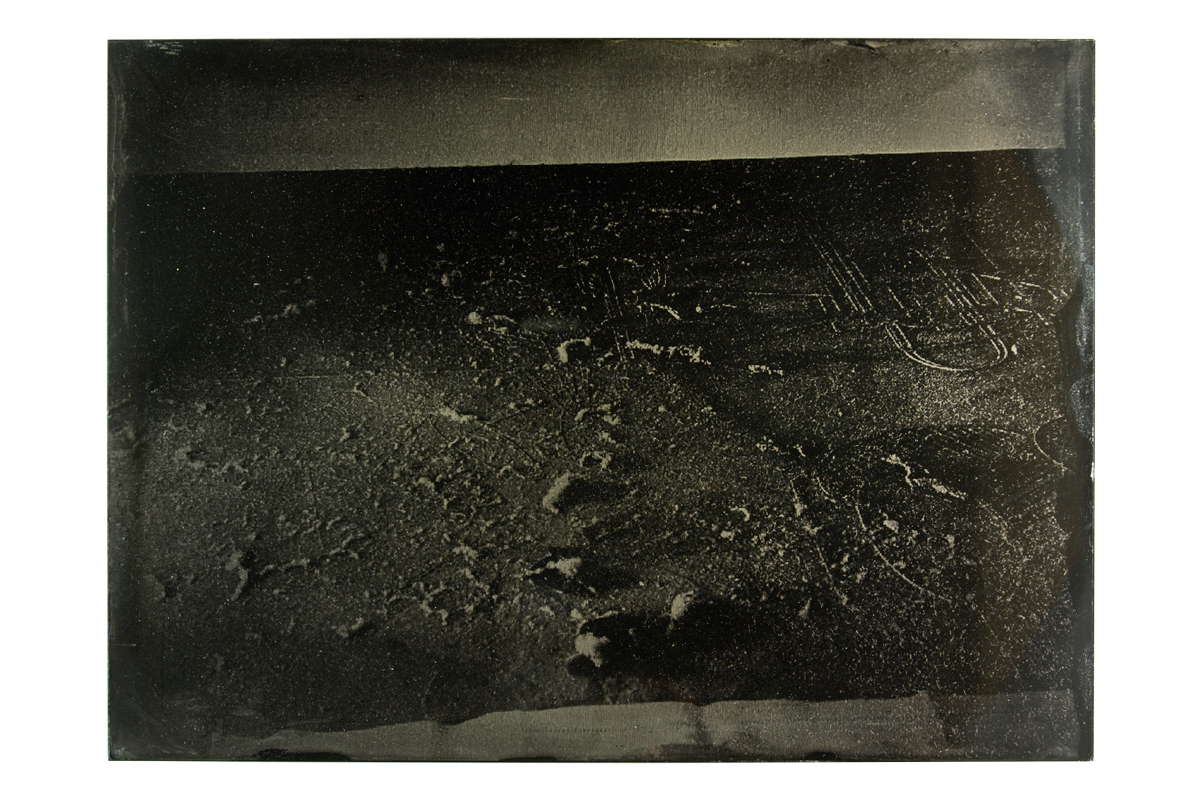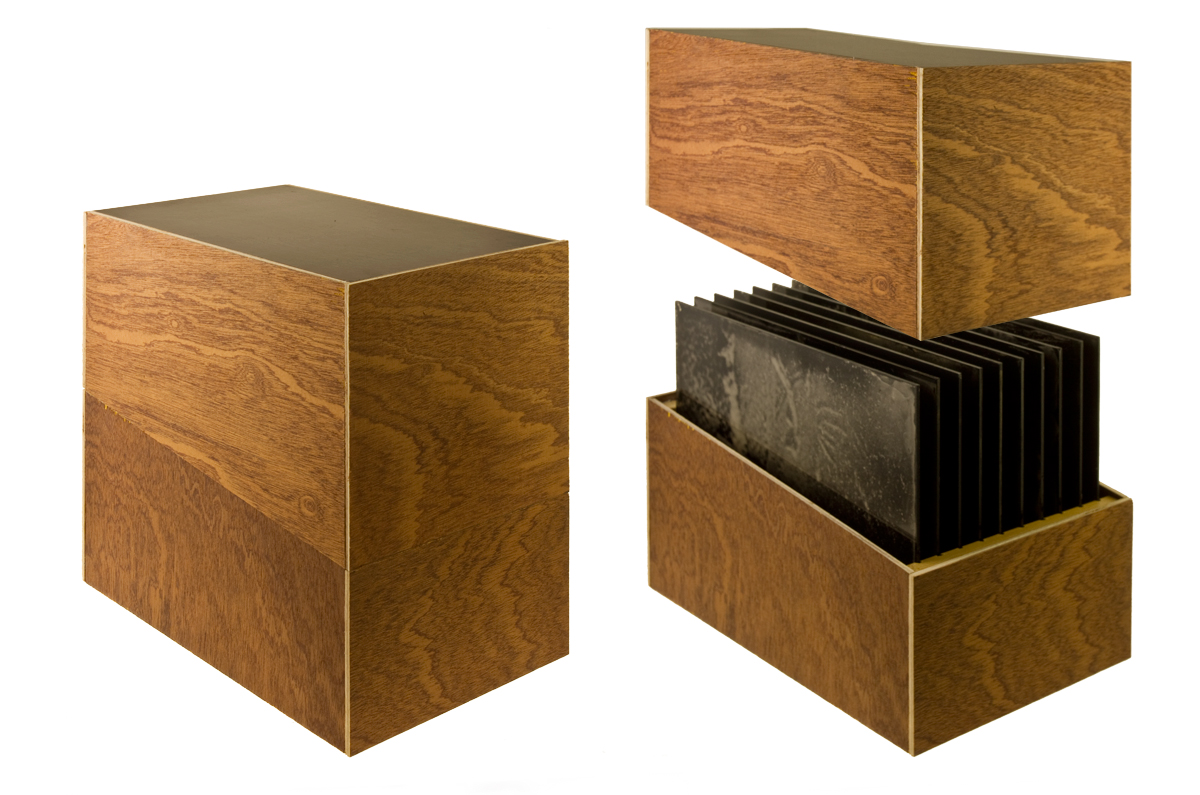
selected work: après-garde | screen shots | century dust | TR | waringin | dead painters studios | sculptural study | sculptural study II | city | marc@mpvk.org
Century Dust
This photographic work is based on Man Ray’s 1920’s picture Dust Breeding. Man Ray took this picture after the collector Katherine Dreier asked him to document her collection. At first, he felt photographing other people’s work was not artistic enough and complained about it to his friend Marcel Duchamp, who did see an opening for a more artistic take on the assignment. He suggested that Ray practise first on The Large Glass (1915-1923), a work that Duchamp had lying around in his studio gathering dust. Man Ray set up his large format camera, opened the aperture and they went to lunch. After they returned and Ray developed the silver gelatin glass negative, he was surprised at the result and started to reconsider the intrinsic relation between documentation and expression in photography.
While I was viewing this image, the sun came in through my window and highlighted a layer of dust that had settled on the screen of my laptop. The doubling of dust on the depiction of an image of dust made me think of all the photographic techniques used to bring this particular image from the 1920’s to my laptop in 2020. For 100 years, Dust Breeding has been gathering dust between every reproduction. From glass negative, to paper print, to high- and low- resolution digital image, it is repeatedly reproduced, scanned, put online and downloaded and was now displayed on my screen.
For my own image, I re-photographed the picture from my screen using a technique that originated around 1850, the so-called ambrotype. The choice of this technique is not only based on the fact that the support of an ambrotype is a glass plate and, like a computer screen, is very sensitive to dust, but also because these types of photos produce a unique image every time and cannot be reproduced in the same way as photos taken with a negative from celluloid, glass or from a digital file. Also, fittingly, this photographic process was invented by Frederick Scott Archer, who wanted to invent a better photographic process to document his sculptures. The name Ambrotype comes from James Ambrose Cutting, who appropriated and patented Archer’s technique in his own name in 1854, cunningly (ab)using the fact that Archer had generously (and naively) given this technique as a gift to the world. Cutting made a small fortune with it, while Archer died penniless in 1857.
This work is therefore not only a continuation of Duchamp and Man Ray’s play on reproduction and original, but also a compression of the various photographic processes of the past centuries and an investigation into how photographic materiality relates to the representation of the subject of the image. These photographs are a kind of archaeological representation of time and the accumulation of dust during the various manifestations in the history of the medium. Dust serves not just as a motive and a subject but is also a side effect of the various photographic techniques that have been used in the process of photographing, printing, digitising and reproducing this image


